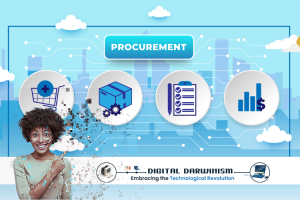 Purchasing Index’s (PI’s) experience of giving executives relevant, real-time, highly visual information is that it leads to change in how work gets done (process) and the way staff do their work (behaviour) in the organisation. It’s the most effective way of turning facts and figures into action and delivering increased sales, efficiencies and savings, Joshua Low of PI tells SmartProcurement.
Purchasing Index’s (PI’s) experience of giving executives relevant, real-time, highly visual information is that it leads to change in how work gets done (process) and the way staff do their work (behaviour) in the organisation. It’s the most effective way of turning facts and figures into action and delivering increased sales, efficiencies and savings, Joshua Low of PI tells SmartProcurement.
A recent article in Information Week talked about Procter & Gamble’s Chief Information Officer (CIO), Filippo Passerini, and his efforts to provide relevant information to his colleagues.
Passerini has pushed to arm every P&G knowledge worker – tens of thousands of employees – with a digital “cockpit” of easy-to-read charts containing the data most relevant to their jobs. The idea was that there would be one shared version of the facts, so people would stop debating what’s happening and focus on solving problems.
“We intentionally put the cart before the horse, because it is a way to force change,” he said. For years, companies have tried to gather all the right data, build the high-powered data marts to support it, and only then build decision-support tools to exploit the data. And that approach hasn’t worked. Instead, Passerini’s team gives executives a clear view of what’s possible, to “use it as a catalyst to drive the right data convergence,” he explained.
Today, 38 000 P&G employees use the cockpit. The idea is to put an end to people fine-tuning which metrics and results get the most emphasis in the spreadsheets they would otherwise e-mail around. It also lets people focus on the biggest problems, so that executives can drill down and find out why, or areas that are booming and might merit more resources. “Cockpits let us manage the business by exception,” said Passerini. “We (in IT) believe technology will always be a commodity fundamentally, and information and decisions is what we stand for and what we need to drive”.
PI believes that P&G’s experience is true for any SA organisation – public or private. Getting relevant information to staff helps them to drive change in the organisation and iteratively gets them to demand more and more information. Tom Peters described the process as ‘ready, fire, aim’, but it is also about helping management and staff to help themselves. Information systems have to be designed with the end purpose in mind – to provide the right information to the right people at the right time and getting the users involved in perfecting the end result.
Technology and services allows organisations to do this today without the need for data warehouses and intermediaries writing static reports. Information can be collected, mapped, consolidated and distributed to staff through a seamless workflow. Information can be presented highly visually (everyone understands pictures more easily than columns of figures!) and in a variety of media – via the web to PCs, tablets, smartphones, etc.
For SA to remain competitive, organisations need to adopt this information model.
PI specialises in providing Decision Support Services to larger s across South Africa. This includes integrating and cleaning data from multiple internal sources and providing clients with dynamic front end solutions, to allow each user to analyse data on-the-fly, and for the organisation to have a shared and unified view on what is happening across the business.
If you are interested to learn more, please contact Joshua Low on joshua@pibenchmark.co.za


























